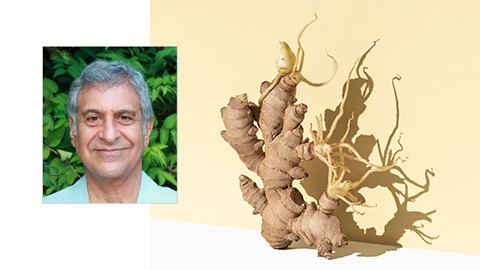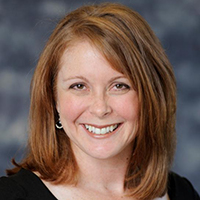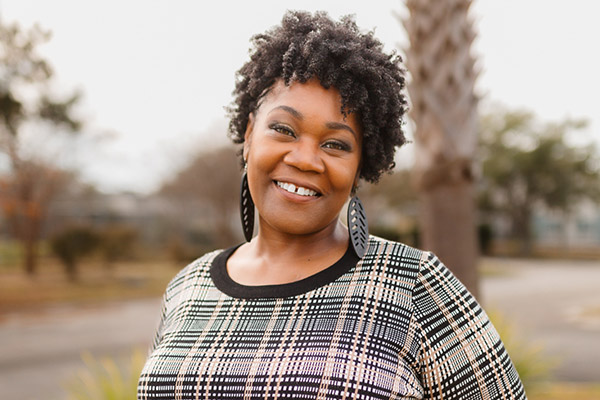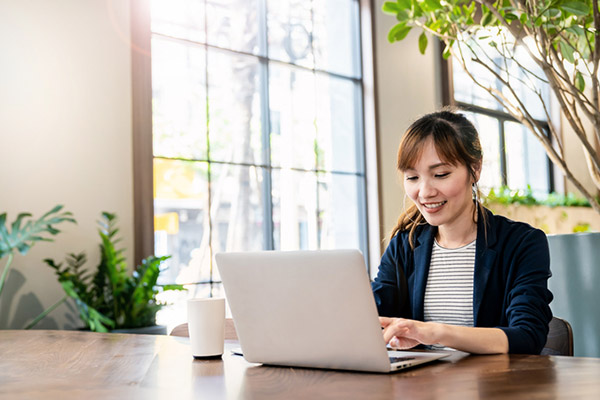05/03/2022

Thai massage is a traditional therapy combining acupressure, Indian Ayurvedic principles, and assisted yoga postures. In this episode of The ABMP Podcast, Kristin and Darren speak with Bob Haddad, author of The Art of Thai Massage, about how he came to find Thai massage, his thoughts on some of the misconceptions of the practice, and how using medicinal herbs and compresses can enrich your practice.



Anatomy Trains: www.anatomytrains.com
Anatomy Trains is a global leader in online anatomy education and also provides in-classroom certification programs for structural integration in the US, Canada, Australia, Europe, Japan, and China, as well as fresh-tissue cadaver dissection labs and weekend courses. The work of Anatomy Trains originated with founder Tom Myers, who mapped the human body into 13 myofascial meridians in his original book, currently in its fourth edition and translated into 12 languages. The principles of Anatomy Trains are used by osteopaths, physical therapists, bodyworkers, massage therapists, personal trainers, yoga, Pilates, Gyrotonics, and other body-minded manual therapists and movement professionals. Anatomy Trains inspires these practitioners to work with holistic anatomy in treating system-wide patterns to provide improved client outcomes in terms of structure and function.
Website: anatomytrains.com
Email: info@anatomytrains.com
Facebook: facebook.com/AnatomyTrains
Instagram: www.instagram.com/anatomytrainsofficial
YouTube: https://www.youtube.com/channel/UC2g6TOEFrX4b-CigknssKHA
0:00:00.1 Speaker 1: Members are loving ABMP Five-Minute Muscles and ABMP Pocket Pathology, two quick reference web apps included with ABMP membership. ABMP Five-Minute Muscles delivers muscle-specific palpation and technique videos plus origins, insertions, and actions for the 83 muscles most commonly addressed by bodyworkers. ABMP Pocket Pathology created in conjunction with Ruth Werner puts key information for nearly 200 common pathologies at your fingertips and provides the knowledge you need to help you make informed treatment decisions. Start learning today. ABMP members log in at abmp.com and look for the links in the featured benefits section of your Member Homepage. Not a member? Learn about these exciting member benefits at abmp.com/more.
[music]
0:01:03.7 Darren Buford: I'm Darren Buford.
0:01:03.8 Kristin Coverly: And I am Kristin Coverly.
0:01:05.5 DB: And welcome to the ABMP podcast, a podcast where we speak with the massage and bodywork profession. Our guest today is Bob Haddad. Bob is a recognized Thai therapist, teacher, and author, who has studied in Thailand and elsewhere for over 20 years. He offers courses in traditional Thai massage and herbal therapies around the world. His new book, The Art of Thai Massage: A Guide to Advanced Therapeutic Practice, contains information on breath, sensing, intuition and body mechanics. The book also features descriptions and recipes of Thai herbal therapies that may be integrated into all forms of bodywork, and his feature article, "Herbal Bliss, how Thai medicinal herbs can be an effective enhancement in massage and bodywork", is the cover story in the March, April 2022 issue of Massage and Bodywork Magazine. Read that article online at massageandbodyworkdigital.com and learn more about Bob's work at thaihealing-arts.com. Hello, Bob. Hello, Kristin.
0:02:05.5 Bob Haddad: Hello. Thank you for having me. It's nice to meet you and speak with you today.
0:02:10.0 KC: We're so excited to have you with us. And Bob, we have so much to talk to you about today. All things traditional Thai bodywork, but let's start with your story. We want everyone to know more about you as we begin our conversation, so what brought you to traditional Thai massage?
0:02:24.2 BH: Well, that's an interesting story. I've had several different careers over the course of my life, and I was at a crossroads, and in my life after a bunch of changes that left me kind of confused and heartbroken and everything, you know? And I just decided to take some time off and go travel and find myself. Traveling has always been good for me in that way, whenever I've been confused or not known how to make a decision or which way to act, I resort to going somewhere. The more unfamiliar the place, generally, the better it is for me. I thrive in that kind of an environment where I don't know, I don't speak the language, because it forces me to kind of go inward and get in touch with who I am and that kind of thing. So, that's what I did, and I went to Asia for the first time. I had traveled quite a bit around the world, but had never been to Asia before, and I was feeling the whole Buddhist kind of pull, you know? And I thought, "Oh, the temples and the meditation that might be conducive to me to help... To figure out what to do and how I would get to the next step in my life."
0:03:37.3 BH: I traveled to different couple of countries and for short periods of time, and then my main objective was to go to Thailand, and I landed in Thailand, in Bangkok. Did a couple of the tourist things, and then I flew to Chiang Mai, the second largest city in the north of Thailand, which is pretty much the seat for cultural activities in Thailand, including Northern Thai healing arts and traditional Thai massage. And of course, the first few days poking around in the city and fascinated by the smells and the sights and the sounds, and... As one does when one goes to a new country. And within a few days, I started to become... Be solicited by people on the street, not on the street, but outside their shops, and we're talking quite a while ago, 20 odd year... 22, 23 years ago, when traditional Thai massage really was not very well known in the West. It was still largely contained within Southeast Asia. So, I decided to go for it, just like you know, how much, $4 for a 90-minute massage, yeah, sign me up, you know?
0:04:48.7 BH: So, that is the way I began to experience traditional Thai massage, and I continued to receive sessions from different massage therapists and shops in different parts of the city. And then I chose one or two that I really liked and went back to them. And during that process, I thought, "Well, I don't know what I'm doing in my life, and I'm here, it's an open-ended ticket, you know? Let me take a course, I'll take a beginner's course." And there were only two schools at that time that were teaching to Westerners in English. And so, I enrolled in a two-week beginner's course at one of those schools, and the rest all came together. That's what happened. I became really fascinated, attracted to the modality, the techniques, and the way it made me feel. And I thought, "Well, okay, is this gonna be... Could this be my next career, you know?"
0:05:49.1 BH: And so, after my travels and my journaling and my explorations and my study, I went back to the States and I began to call my friends and said, "Hey, I wanna practice this Thai massage stuff on you." "You wanna give me a free massage? Great." And I set up a little mat in a spare room in my home, and friends of mine would come over a couple... Two or three a week, and I would practice the moves with my little book next to me. [chuckle] Okay, lift your leg now and do this, 'cause I hadn't really memorized the sequence.
0:06:25.5 BH: And little by little I kept doing that, and I met a few other teachers that I began to study with. In Canada, I studied with someone and in the United States, someone who had been learning from one of the schools in Thailand as well. I met some other people who were mostly table workers who were also trying to adapt their work to the mat, to understand how to work on the floor mat, which... It's a whole different set of skills. I mean, they're interchangeable, but it's quite different than doing table work. And then I returned to Thailand later that same year, I was so fascinated and I went not back to the same school, went to another school, and I studied for about a month or so, came back and still continued to give out the free massages, I didn't feel I was ready yet. And anyway...
0:07:18.1 DB: Bob, did you have any massage and bodywork training before? Experience...
0:07:21.7 BH: Zero.
0:07:22.3 DB: Wow.
0:07:22.5 BH: Zero.
0:07:23.0 DB: Okay.
0:07:24.0 BH: I had done yoga for many, many years, and there are assisted stretches in traditional Thai massage, and there's a parallel to yoga theory and Ayurveda, you know? So, there was some sort of a connection. And I like to think that I'm fairly okay in my body, I have a good sense of movement and breath and body mechanics, that kinda thing. So those things are very important as well. But in terms of massage therapy from a western perspective of bones and fascia and muscles, zero. I couldn't name a muscle. If... Well, I know two or three, but not like the table workers that I know, who can identify conditions based on which muscle groups are connecting and all of that stuff. So, in traditional Thai medicine in Thai massage, we do, of course, affect the physical body, but it is also considered a holistic healing art, in the sense that the whole body is affected, including the energy body. And so, dis-ease with a hyphen is... Comes about by not only physical manifestations of problems, but also energetic blockages.
0:08:39.3 BH: And so, one of the intents in traditional Thai massage, as in Chinese medicine, for example, acupuncture and as in Ayurvedic medicine, is to find those "blockages" in the channels or in Chinese, the meridians, in Ayurveda, the nadis, in Thai medicine we call them Sen, is to find those areas that's either stiff or blocked where a person is holding tension, not able to relax. If they... You pick up their arm and they keep it erect, well, there's some reaction there. So you want to loosen that area up and try to understand where is... What is the cause of that particular condition in that very moment? And so...
0:09:28.6 DB: Bob, this is a perfect transition for us to ask the question, can you share with our listeners a general overview of traditional Thai massage?
0:09:37.2 BH: Yes, so I will do my best to do so. Before I do, I want to say that there's a lot of misinformation out there among practitioners, teachers, even in literature and things that you find on the web, for example, that claim that Thai massage is this very ancient type of bodywork that has remained unchanged for many, many thousands of years. That it was practiced by the doctor, by the Buddha's doctor, that it was invented by this particular Ayurvedic doctor back 2600 years ago. And that it was transmitted to Thailand in its purest form. None of these things can be proven to be true, so I do wanna let the listeners know to beware that there's a lot of misinformation out there. But to answer your question, traditional Thai massage is an amalgam of a combination of elements, including physical movement, compression, awareness of breath in the person that you're working with, as well as your own breath and focused acupressure, thumbing, lot of thumbing. You can use elbows and knees in some cases, feet in some cases.
0:10:56.4 BH: But for the most part, palming and thumbing acupressure along the energy lines, and that's another ball of wax. They're not really invisible lines that carry invisible energy, they're actually physical structures, which is also another big misperception, but maybe we can talk about that later. So it's a combination of manipulation, broad and focused pressure, acupressure along specific areas and specific trigger points, for example, and assisted stretching, assisted yoga. So in a way, it's almost sort of like... That's how partner yoga kind of came about. A lot of moves in partner yoga come directly from traditional Thai massage. So, pressure, acupressure, assisted yoga, it's done on a floor mat, on a comfortable floor mat, not a yoga mat, but a foam or a cotton mat and not a big thick futon either, because that's just too fluffy and not firm enough. And no oils or lotions are generally used throughout a session. A lot of the techniques that are present in table work, like stripping and kneading and that kind of... Those kinds of things are generally absent in Thai massage. If one chooses to go into the herbal medicine aspect of the work, herbal balms and poultices.
0:12:31.6 BH: Topical poultices as well as herbal compresses, which was the feature of the article that we did in this month's issue, are wonderful enhancements to a traditional Thai massage because when you do find an area that's, for lack of a better word, blocked and you're really not sure how to manipulate it because there's an awful lot of tension there or there's a tight muscle area or the person is subconsciously holding or there's some body memory going on there from a past trauma, instead of just going in there and working on it right away, get the herbal compress, which has lots of anti-inflammatory herbs in there.
0:13:20.4 BH: And the heat, of course, just helps to melt away a lot of that tension. And work that area with compresses first in varying degrees of heat with varying techniques according to how hot the particular compress is. And also according to whether or not you're working on top of clothing or if you're lifting up the shirt or lowering the pants or lifting up the pants leg, etcetera. Thai massage is done wearing light clothing. And then once that area is opened a little bit more, or you can feel it, then you can begin to manipulate it to the point where it's a little bit more relaxed and ready to receive more direct treatment.
0:14:01.7 Speaker 5: Let's take a short break to hear a word from our sponsors.
0:14:04.7 Speaker 1: Anatomy Trains is delighted to invite you to our in-person fascial dissection workshop May 30th through June 3rd, 2022. We're excited to be back in the lab with Anatomy Trains' author Tom Myers and master dissector Todd Garcia in Todd's Laboratory of Anatomical Enlightenment in Boulder, Colorado. Join students from around the world and from all types of manual movement and fitness professions to explore the real human form, not the images you get from books. Visit anatomytrains.com for details.
0:14:42.6 Speaker 5: Now let's get back to the podcast.
0:14:45.1 KC: Bob, let's transition and talk more about the main focus of your recent article in Massage and Bodywork magazine, which is incorporating herbal medicine and Thai herbal compresses into massage therapy sessions. Can you tell us more about the possible benefits of using these compresses with clients? And then also what kind of techniques can practitioners use with Thai herbal compresses?
0:15:08.9 BH: Sure, absolutely. I have found that the use of... I never give a Thai massage session without a compress in my steamer nearby. Even if I don't really use it all that much, when it's needed it's absolutely wonderful. And, I mean, you hear and see how the client responds to the heat, the aromas, the aromatherapy component of it, and how it actually does relax muscle groups. But even more than that, how in the relaxing of the muscles, breath is enhanced, people go into a parasympathetic state more easily. The parasympathetic state when someone can engage in their own self-healing or their own reflection, very often connected to one's feelings, emotional states, spiritual states, that kind of thing.
0:16:06.1 BH: So I believe very, very much in the Thai herbal compresses, and I'm very fortunate to have studied with two of the greatest matriarchs of the Thai herbal tradition in Thailand, both of whom are deceased now but I remember them every time I have a session in my practice. I have a little altar with the photos of my main teachers, which by the way, for you folks listening in, if you don't have a little space in your practice room, if I may be so bold as to suggest that you put a little something there to remind you of your lineage. In Thailand, for example, every practice room has to have some sort of a small altar of some sort. And it doesn't have to be religious, but in Thailand, because they're Buddhist there's always usually a Buddha statue or a Buddha image. There's always an image of the doctor, Ayurvedic doctor, Dr. Jivaka because he's considered the father figure of traditional Thai medicine, even though he wasn't Thai. He treated the Buddha and as a physician, and so they honor him in that way.
0:17:21.0 BH: And then put something of meaning to you, to the practitioner if... Especially in Thailand we use mementos or images of deceased people that we know, especially family members, mothers, fathers, grandfathers. So if your grandmother passed away and you loved her very much and you happen to have a small picture of her or a bracelet that she used to wear or something, you can put that on the altar. And then along with, traditionally, we'll put a little candle. I light a little votive candle for each client I see, and I let it extinguish itself, or I extinguish it with my dampened fingertips because in Thailand, and in many cultures, we use the breath to impart blessings. So if you were to blow out a candle, you're actually dispelling all the goodness that you've done. Anyway, these are just little quirky things, but their power is...
0:18:19.6 DB: No, it's beautiful. Yeah, actually, I love the sentiment of actually honoring your lineage and just what a healthy reminder as you're going into a session, or mid-session, if you're losing your path. I love that.
0:18:32.5 KC: I love it too. And I don't have that in my practice room yet, so I will be doing that starting tomorrow. Thanks, Bob.
0:18:37.3 DB: Bob, one final question with regards to the Massage and Bodywork article, can you tell us a little bit about the techniques that practitioners might use, even non-Thai trained practitioners, can use with herbal compresses?
0:18:53.4 BH: Yes, absolutely, I'd be happy to share that information. There is a general information in the article that we did about how to prepare herbal compresses in a very traditional way, but using materials that one can buy in the west. There are herbal distributors that you can buy by the pound, by the kilo, and mix your own blends. And there's also a general recipe in that article, but there's a lot more information in other sources, including in my book and also on the Thai Healing Alliance website, for those of you that are interested, please get in touch with thaihealingalliance.com, or with the magazine, and if you want to get in touch with me, I'm happy to help anybody that might be interested in that. The general blend that I use for my compresses is a traditional one, based on equal parts of lemon grass, dried lemon grass and dried eucalyptus, and then one part each of dried ginger pieces, dried ginger powder, and then smaller portions of peppermint and rock salt and a tuber called galanga.
0:20:10.5 BH: Galanga is a Thai tuber, very... Well, Asian tuber, and in Australia it's available too. Very similar, it's in the ginger family, but it has a slightly different taste, it has similar properties to ginger. So you will add to these dry ingredients, you add crushed ginger. So for every time I make a compress, I have my little meat tenderizer, I don't use it for meat, but I use it to crush my ginger and you pull apart the strands, and so the ginger is stringy and you mix this fresh juicy kind of ginger root with the dry stuff, and then put it in a little muslin bag or in a shop cloth, wrap it up. There are directions in the article, as well as online. And so, I use these compresses to great extent with my clients when, as we were speaking about earlier, you find a large mass of tightness or a blockage in a person's body, wherever it may be, in their legs, or in their shoulders, or in their abdomen, and you want to soften and open with heat and the medicinal properties of the herbs that area first before you physically manipulate it with your hands.
0:21:31.2 BH: And there are many different techniques that can be used according to what you're trying to do, to coax open the area if it's against bone structure, like the back or the spine or the upper chest. Very commonly, we can use an extremely hot compress and rapidly tap the area, Tapotement, where you just tap the area, that helps to stimulate and to open the area, it also helps to free the breath. If you're noticing that the client has beleaguered breath, or is having a hard time taking full and deep breaths, that also can be very helpful. We can use long-term compression of compresses against a muscle group, but then, you have to be careful to make sure that it's not too hot, because if you're holding that compress there for 10 seconds or eight seconds or so, make sure you test it on yourself first. So whenever I go to the steamer, I open the top of the steamer, grab my rags so my hand doesn't get too hot, pick up the compress, if I'm working on bare skin, like on their legs or their thighs or their back.
0:22:45.2 BH: And then before I apply it to someone, I test on myself, if I'm working on top of clothing on the leg, I touch it to my leg first to gauge how long I can stay, because you definitely don't want to just be oblivious because then you can wind up sort of burning the person. So we use the different types of techniques according to what we're trying to do to release or to open a particular area in the human body, and in accordance with how hot the particular compress is. So, at various times during a session, I will either lower or raise the temperature of the steamer, because I want to affect a different part of the body in a different way. And a good classic example of this is when you engage in steam inhalation. Very often for people that manifest with asthma or bronchitis or they have TMJ, and it's something that's very focused in the face or the neck or the head, I will raise the temperature in the steamer a few minutes before I know that I'm going to want to be working to do some aromatherapy inhalation.
0:24:00.9 BH: So by the time I am positioned in order to work with that person at the neck or the head or the face, that's... The steamer is... That compress is smoking, you know? And by the time I take it out, it's billowing with vapor, which I then put the compress on the floor, because it's even too hot for me to hold, and as the steam comes out from it, I turn the person's head, so their nose and mouth is very, very close within an inch or two of the face of that compress. And just as they're breathing it in, because they always go for deep and beautiful breaths, because it smells fantastic. And it really helps to open up congestion and bring about deep relaxation. So while that person has their head inclined in one direction, I might be working on the opposite shoulder or working on the opposite side of their neck very gently, but really all I'm doing is buying time, because I don't wanna let go of them, I wanna keep my connection to them while they're breathing in the vapors. And then I will take that compress, bring it to the other side of their head and then slant their head in that same direction, so they can breathe in through the other nostril as well.
0:25:10.9 DB: Bob, this has been a fantastic podcast. And readers, I just wanna make sure that you go to Massage and Bodywork Digital, or access your print magazine and read Bob's article, which he goes into much more depth about herbal compresses. And as Bob mentioned as well, for readers to either contact Bob or to visit thaihealingalliance.com to find out more information. Thank you so much for joining us today, Bob, this has been incredibly enlightening and just a fun great conversation.
0:25:42.8 BH: Thank you. It's been fun for me too. And thanks to Massage and Bodywork Magazine for doing such a great job over the years.
0:25:50.2 KC: Khob khun ka, Bob, such great information, we appreciate it.
0:25:52.1 BH: Khob khun ka. Thank you, bye-bye everyone.
[music]





